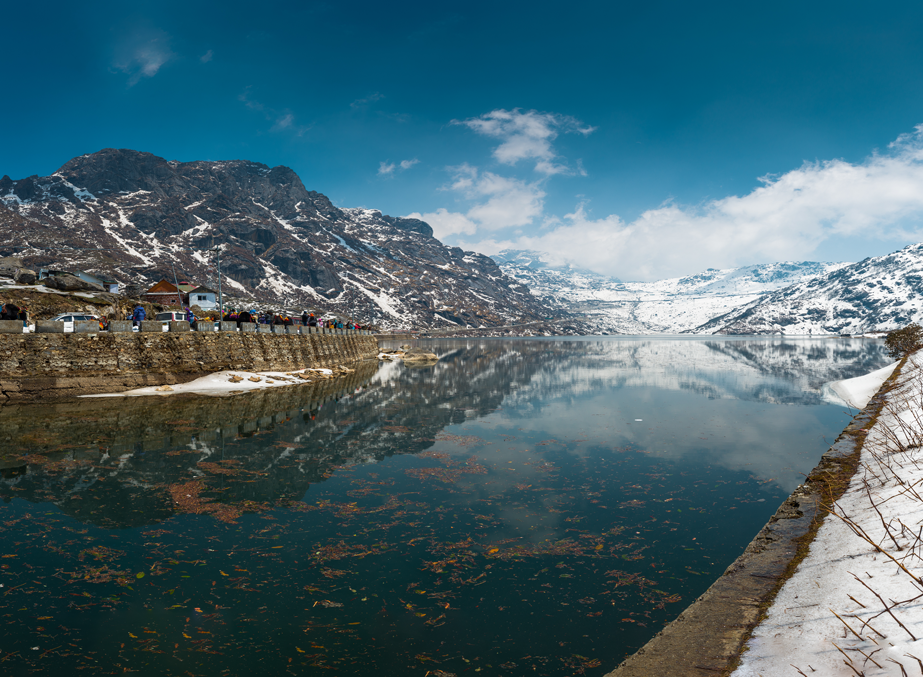The Changu Lake, a serene body of blue water perched high in the Gangtok highlands, is one spot you have to see to believe it exists.

Changu Lake: Sikkim's Mystical Beauty
Changu Lake is one of those exceptional locations that elevate the cliche. It is a frozen glacial lake surrounded by towering peaks, crisp, icy air, and an azure blue sky. At a height of 12,400 feet on the Gangtok-Nathula Road, this shimmering body of emerald blue water is nourished by the melting snow of the neighbouring mountains. Its name, Tsomgo Lake, which means "source of water," is another name for it.
The lake has cultural value for the neighbourhood in addition to being beautiful. Lamas would once read the lake's waters to foretell the future. When the water had a murky hue, it portended a gloomy, turbulent future. During Guru Purnima, Sikkim's faith healers visit this location to make prayers.
Changu Lake is more than just a place to go or another lake. You will undoubtedly treasure and retain this memory dear to your heart for a very long time.
Things to know
It is 38 km away from Sterling Gangtok
If travelling in the winter, be sure to check the accessibility.
Best time to visit Changu Lake
Anytime of the year, tourists can arrange a trip to the stunning Tsomgo Lake. Winters may be bitterly cold, with temperatures occasionally falling below zero. In the winter, when the lake is frozen and shrouded in mist, the scene is otherworldly. Its magnificence is enhanced by being surrounded by snow-capped peaks. The summer months of May through October are the ideal time to visit Tsomgo Lake. Wildflowers begin to blossom at this time, and the snow begins to melt. Additionally, this is the ideal time to photograph the lake's picturesque aspect, with all of the nearby vibrantly coloured flowers in full bloom.
History of Changu Lake
Sikkim is renowned for having a rich cultural legacy with origins in its beautiful landscapes. Tsomgo Lake is linked to well-known mythology. The syllables "Tso" and "go," which both indicate "ahead" in the Bhutia language, are the origin of the lake's name. Where the lake is now located was once the site of a yak stable, according to mythology. An older woman who had lived there as a yak herder had a dream in which she was ordered to leave because the area was about to be flooded by water. The older woman made the decision to go, but the local herders didn't trust her.People saw an older woman with snow-white hair enter the valley as she was leaving the area, and soon the area was covered in water. The surviving herders in the vicinity were attracted by the flooding of the entire area. The lake later acquired the name Tsomgo since it was thought that this elderly woman was the lake's protector deity. Lama used to forecast the future based on the shifting hues of the lake. Today, it is a revered location where residents come to pray yearly during Gurupurnima with shamans.

